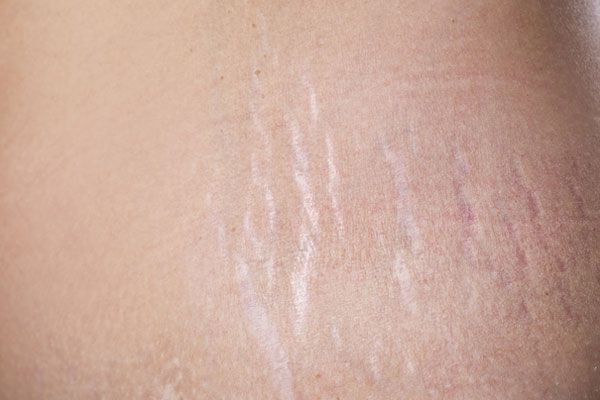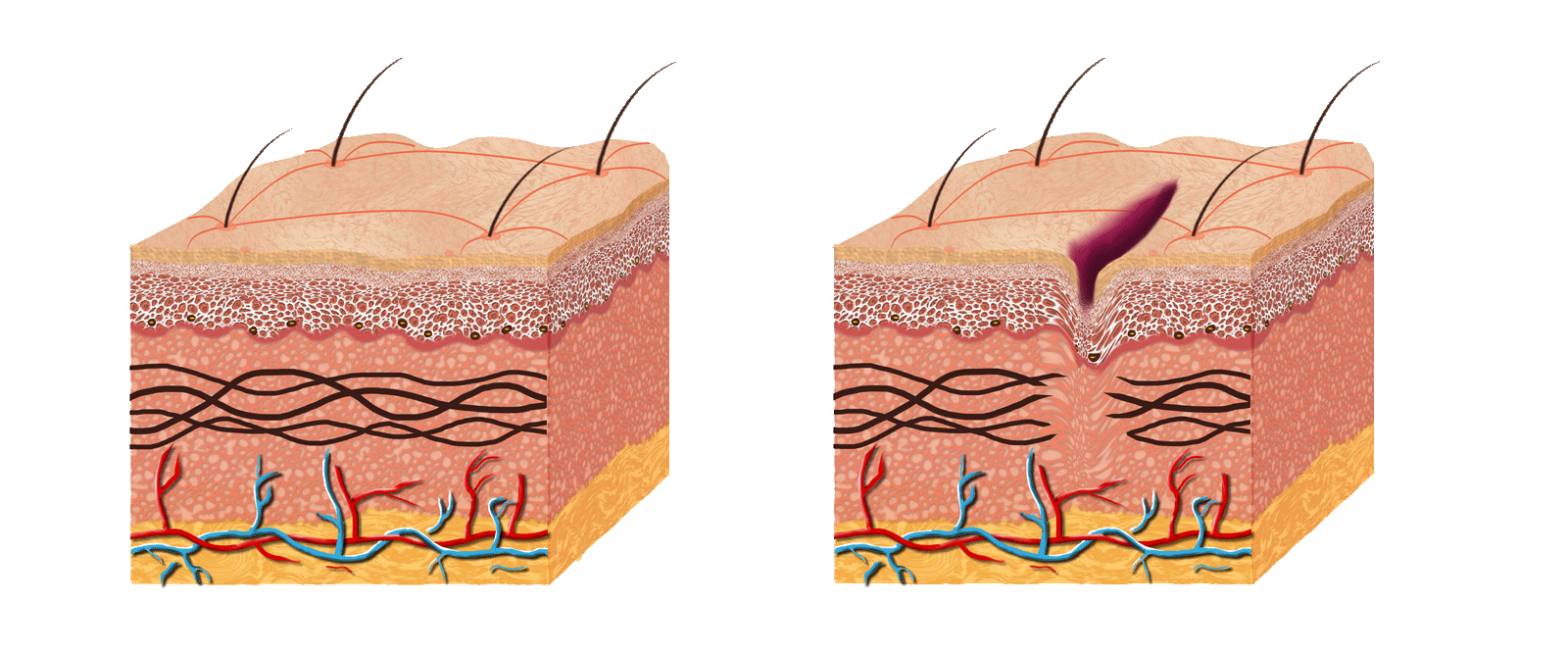
Stretch Marks
Stretch marks, or striae, can make your skin look uneven and may leave you feeling self-conscious.
These scars develop when the skin stretches or shrinks too quickly. While permanent, treatment can help significantly lighten them.
I’m not sure if what I have are stretch marks, what do they look like?

Stretch Marks Are Not Painful but Dramatically Affect the Look of Your Skin
Discoloration
New stretch marks will usually be a distinctly different color than the rest of your skin. Depending on your skin tone, stretch marks may appear reddish, purple, pink, or brown. Over time, the color will typically fade.Unevenness
Stretch marks are usually slightly raised from the surface of the surrounding skin with depressions between the scarring. They typically run vertically but can sometimes appear horizontally.Itchiness
At first, stretch marks may itch. This is caused as nerves react to the tearing of the dermis, though this should subside with time.How Stretch Marks Change Your Skin
Certain Conditions & Hormonal Changes Can Heighten Your Risk
While women in general are much more likely to develop stretch marks, other factors can heighten your risk as well, including:
- Changes in hormones during pregnancy and puberty
- Using corticosteroids
- Obesity
- Breast augmentation surgery
Many patients are also more susceptible to stretch marks due to conditions such as diabetes or Cushing’s Disease.
Sudden Changes in Weight Can Tear the Dermis
Weight Gain
Rapid and excessive weight gain directly causes stretch marks.
Tearing of the Dermis
When the skin begins to stretch, the elastin fibers of the dermis are damaged. This tearing leads to inflammation, allowing blood vessels to show through the skin.Many Men & Women Have Stretch Marks

Stretch marks occur after 43 to 88 percent of pregnancies. Additionally, about 43 percent of obese patients develop stretch marks.
A Simple Exam Can Identify Stretch Marks
Since stretch marks have unique physical characteristics, they are fairly easy to diagnose. Your doctor can simply examine your skin to determine whether the scarring is stretch marks or another skin condition.
If they believe that an underlying condition may be contributing to your stretch marks, further testing may be needed to ensure it is addressed.

Changes to Your Lifestyle Can Help Prevent Stretch Marks
Maintain a Healthy, Stable Weight
Eating a healthy diet and exercising frequently can help prevent extreme weight fluctuation.Avoid Corticosteroid Creams & Pills
Steroids can contribute to a break down of the connective tissue within the skin. Minimizing or completely avoiding corticosteroid medications can help you prevent stretch marks from developing.Slow Down When Bodybuilding
Many patients who participate in bodybuilding gain large amounts of muscle quickly, which can stretch the skin. If you are bodybuilding, you should take it slow to prevent tearing.Professional Treatment is Highly Recommended for Stretch Marks
“In-office procedures have proven more effective than the creams, lotions, and gels. “ American Academy of Dermatology
You Can’t Erase Stretch Marks, But You Can Make Them Fade
Typically, your doctor will recommend a combination of treatments to address stretch marks, including:
- Chemical peels
- Microdermabrasion
- Laser therapies
- Microneedling
- Ultrasound
While none of these treatments, alone or together, can completely alleviate stretch marks, they can make them substantially lighter. Your doctor can help you determine which treatment plan is best to address your stretch marks based on certain factors such as the severity of the condition and how long you have had them.


